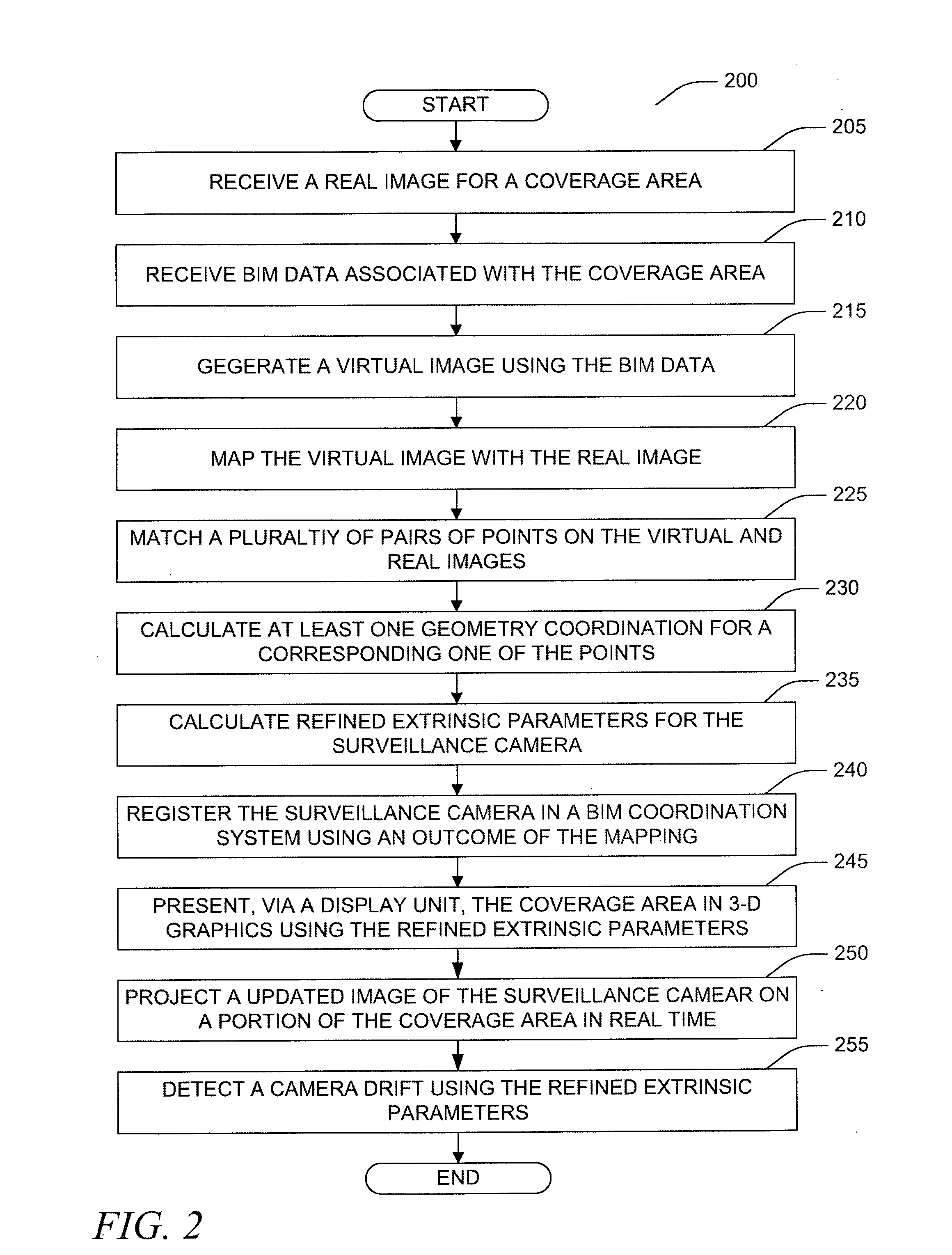Camera registration and video integration in 3D geometry model
a technology of geometry model and camera, applied in the field of system and method of camera registration in three-dimensional (3d) geometry model, can solve the problems of difficult placement, difficult to determine the most efficient and economical use of camera resources at hand, and difficult to register a camera in the 3-d model
- Summary
- Abstract
- Description
- Claims
- Application Information
AI Technical Summary
Benefits of technology
Problems solved by technology
Method used
Image
Examples
Embodiment Construction
[0020]Development of geometry technology, high-fidelity three-dimensional (3-D) geometry models of building, such as Building Information Model (BIM) or Industry Foundation Classes (IFC), and its data are becoming more and more popular. Such technology makes it possible to display cameras and their coverage area in a 3-D geometry model (hereinafter used interchangeably with “3-D model” or “3-D building model”). Three-dimension (3-D) based solutions allow providing more intuitive and higher usability for a video surveillance application, compared to two-dimension (2-D) based solutions. This is because the 3-D based solutions, for example, better visualize occlusions by objects in field of view (FOV) of a camera, such as a surveillance camera installed in or around a building or any other area. Applicants have realized that with camera parameters, such as a location (or position) (x, y, z) or an orientation (pan, tilt, zoom), in a 3-D model, it is possible to furthermore enhance the s...
PUM
 Login to View More
Login to View More Abstract
Description
Claims
Application Information
 Login to View More
Login to View More - R&D
- Intellectual Property
- Life Sciences
- Materials
- Tech Scout
- Unparalleled Data Quality
- Higher Quality Content
- 60% Fewer Hallucinations
Browse by: Latest US Patents, China's latest patents, Technical Efficacy Thesaurus, Application Domain, Technology Topic, Popular Technical Reports.
© 2025 PatSnap. All rights reserved.Legal|Privacy policy|Modern Slavery Act Transparency Statement|Sitemap|About US| Contact US: help@patsnap.com



